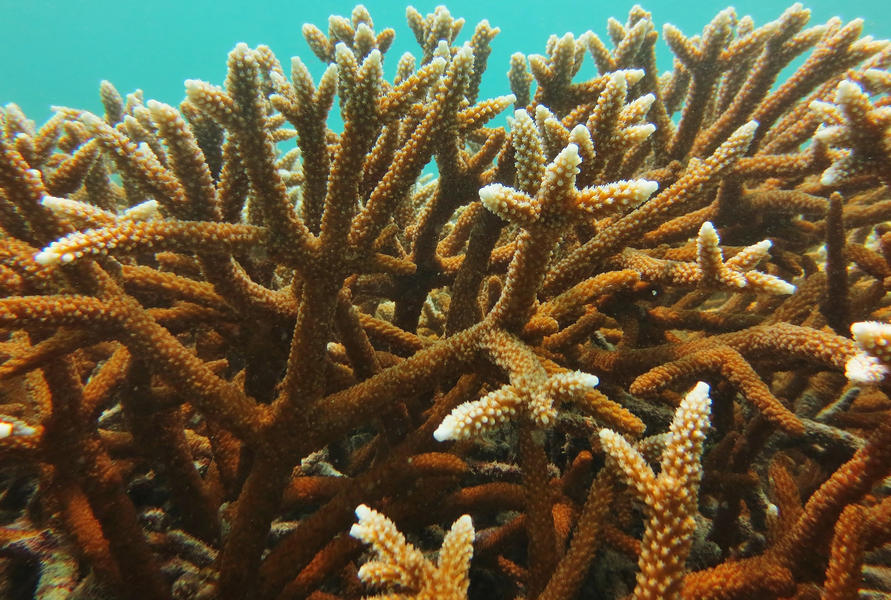Coral reefs are increasingly threatened by coastal development activities that elevate turbidity and resuspend sediment. This project, conducted by Texas A&M University-Corpus Christi (TAMU�CC) in partnership with the Florida Department of Environmental Protection (DEP), evaluated the sublethal impacts of suspended sediments on Orbicella faveolata, a threatened and ESA-listed coral species particularly vulnerable to sediment stress and stony coral tissue loss disease (SCTLD).
Using controlled laboratory experiments, the study exposed O. faveolata fragments to suspended sediments collected from two sources: a natural reef (carbonate-dominated) and a port channel (fine-grained, contaminated). The experiments were conducted at two turbidity levels (4 and 15 NTU). Corals were assessed over 30 days for metabolic performance (via oxygen consumption), calcification (using total alkalinity anomaly), and photosynthetic efficiency (via PAM fluorometry). A subsequent recovery period was monitored to assess resilience following stressor exposure.
Key findings include:
• Sediment characterization revealed that port sediments had a higher organic content (66.2% vs. 24.0%) and elevated concentrations of heavy metals, including arsenic, copper, and zinc, as well as altered microbial communities with potential pathogenic risks.
• Sublethal physiological impacts were observed across treatments. Corals exhibited trends of reduced photosynthetic efficiency, protein concentration, and symbiont density—despite no visible bleaching—highlighting subtle but meaningful biological stress.
• Calcification and growth rates differed significantly across treatments. Surprisingly, corals exposed to port sediments exhibited higher net calcification in some cases, potentially due to a greater chlorophyll-to-symbiont ratio that supported photosynthesis despite turbidity stress.
• Respiration rates (oxygen consumption) fluctuated over time, indicating metabolic strain. Increased oxygen demand early in exposure may serve as a useful early-warning metric of coral stress.
• Recovery varied by genotype. Some corals failed to return to their pre-stress physiological conditions after five weeks, particularly those from genotypes that showed the most significant photophysiological decline during exposure.
Multivariate analyses revealed that sediment source and associated contaminants (especially heavy metals) were primary drivers of coral response, along with treatment turbidity and coral genotype. While direct mortality was not observed, the cumulative effects of reduced metabolic and photobiological function indicate potential long-term vulnerability under repeated exposure scenarios. These findings provide critical evidence to inform DEP and other regulatory agencies in updating water quality criteria and sediment management practices. The study supports the implementation of sublethal physiological endpoints (e.g., respiration, protein loss, and photosynthetic decline) into environmental permitting and coral reef impact assessments. It also emphasizes the need for stricter turbidity thresholds and post-disturbance monitoring during and after coastal construction activities. In summary, this work advances our understanding of how viii chronic, moderate turbidity affects coral health, identifies key sediment-related risk factors, and highlights the importance of incorporating sensitive physiological metrics into coral reef conservation and resilience planning.


